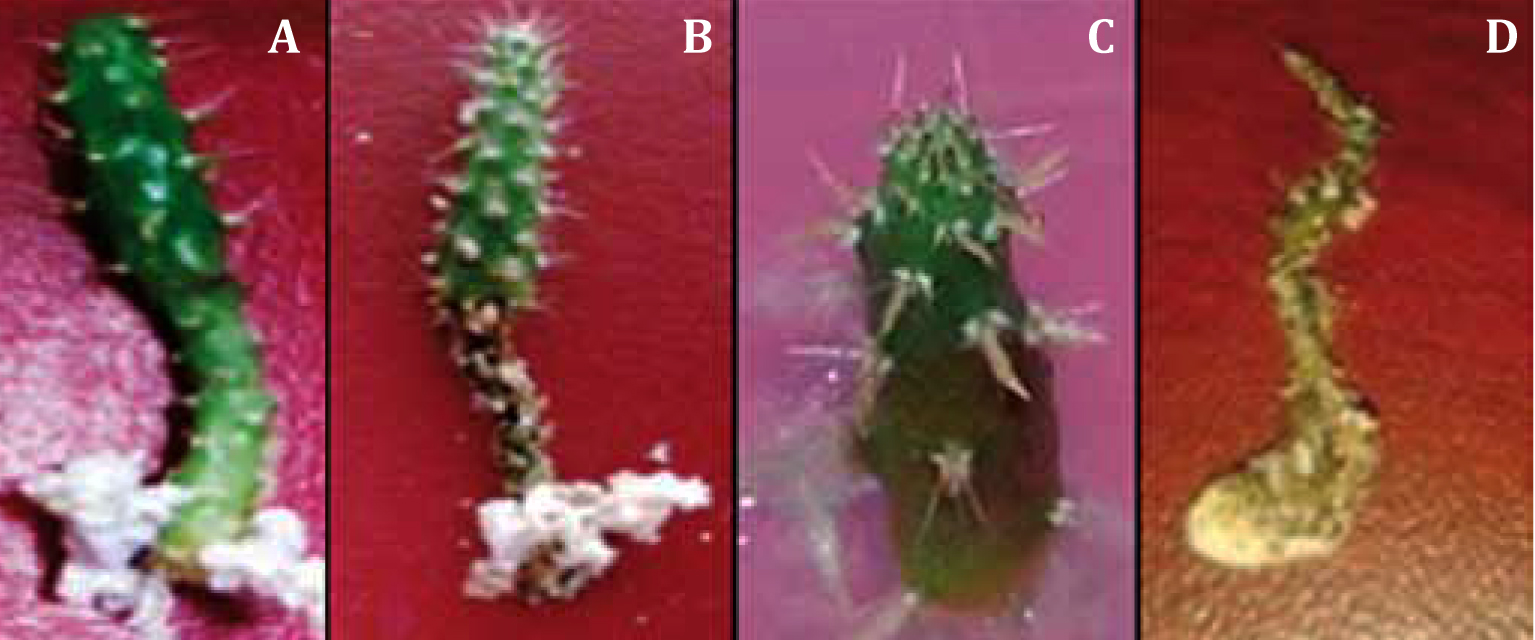In vitro selection method in explants of Opuntia sps. with resistance to black spot caused by Pseudocercospora opuntiae
Keywords:
black spot, Opuntia, in vitro selection, fungal extractAbstract
The black spot cactus is caused by Pseudocercospora opuntiae a disease spread amongproduction systems. The process of pathogenesis, comprising an incubation periodof 90 d. and the development of symptoms can occur in 25 d.; however, is still limitedinformation pathosystem P. opuntiae in Opuntia sps. This study aimed to evaluate theeffect of extracellular products and spores of P. opuntiae on cactus pear under in vitroconditions. Three genotypes from zygotic embryos and two genotypes product of fieldselection which were characterized as tolerant (T) and resistant (R) to P. opuntiae wereevaluated. Opuntia in vitro seedlings were inoculated with the extracellular extract and asuspension of 108 conidia m/l, the damage at 15, 30, 45 and 60 d. post-inoculation (dpi)were evaluated. After 60 dpi symptoms occurred in explants inoculated with purefungus, while the excretion products of the fungus in liquid medium showed ability toinduce symptoms similar to fungal inoculum. These results demonstrate that P. opuntiae infected Opuntia explants under in vitro culture conditions, which could be an importanttool in the selection of resistant genotypes to black spot in Opuntia sps.

Downloads
Published
Issue
Section
License
Aquellos autores/as que tengan publicaciones con esta revista, aceptan las Políticas Editoriales.


